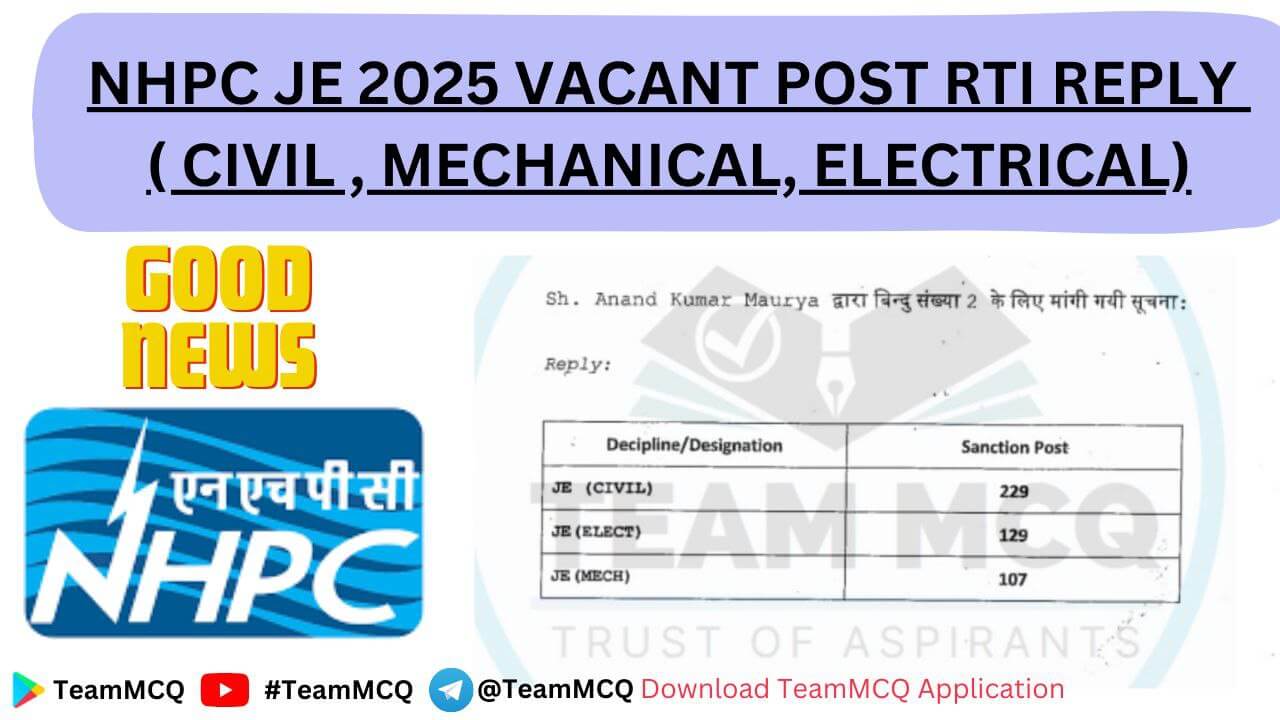Discover 7 key phases of transportation in India — from railways to metros — and how they shape travel, economy, and connectivity nationwide.
Introduction: Transportation in India
The evolution of transportation in India is a fascinating journey through time, from the early days of ancient trade routes to the cutting-edge technologies shaping the future. India’s transportation landscape has undergone remarkable transformations, driven by cultural, economic, and technological changes. From the simple bullock carts and waterways that connected ancient civilizations to the sprawling railways, airways, and modern digital transit systems of today, India’s transport history is both complex and inspiring.
In the first part of our exploration, we delve into the ancient beginnings, where trade routes, carts, and waterways played a critical role in early exchanges. The British-era transformations saw the arrival of railways, ports, and well-developed road networks, which laid the foundation for the country’s industrial progress.
The mid-20th century witnessed the arrival of civil aviation and urban tram systems, shaping the urban landscape and making mass transit more accessible. After independence, India focused on revival and planning, building a transport network that could support rapid industrialization and urbanization. The liberalization and private participation that followed in the 1990s ushered in a new era of growth, with private players contributing to the expansion of transport infrastructure.
In the 2010s, smart transport and digital integration revolutionized how India approached mobility, with app-based ride services and metro systems gaining prominence. Looking ahead, India’s transport vision is set to embrace futuristic technologies such as bullet trains, Hyperloop, and green transport, all of which promise to reshape the way people travel across the country.
This article provides a comprehensive look at the evolution of transportation in India, exploring the milestones and innovations that have shaped the country’s transport systems and offering a glimpse into the future of mobility.
Ancient Beginnings: Trade Routes, Carts, and Waterways
The evolution of transportation in India began long before the industrial age, rooted in the subcontinent’s ancient civilization and geography. Early Indians relied on bullock carts, palanquins, and boats for local travel and trade. Well-established ancient trade routes connected major cities and regions, facilitating the movement of goods like spices, cotton, and precious stones.
The Silk Route and Dakshinapatha (Southern Route) played crucial roles in connecting India to Central Asia, Persia, and Southeast Asia. These routes weren’t just commercial—they were cultural highways where art, ideas, and religions traveled too.
Inland river navigation flourished, especially along the Ganga, Yamuna, Godavari, and Krishna rivers. Boats carried goods and people across vast distances, shaping early trade centers like Varanasi and Ujjain. The Indus Valley Civilization (c. 2600–1900 BCE) had planned road systems and evidence of transport technology like wheeled carts and dockyards, suggesting an early sophistication in logistics.
This era marked the foundation of the evolution of transportation in India, driven by geography, trade, and cultural exchange rather than machinery. These early systems would eventually evolve under foreign rule into more complex networks of roads, ports, and rail.

Important Questions for Revision:
- How did the geography and early trade routes influence the evolution of transportation in ancient India?
- What role did the Silk Route and Dakshinapatha play in connecting India to other parts of the world?
- How did inland river navigation contribute to the growth of trade centers like Varanasi and Ujjain?
- What evidence from the Indus Valley Civilization indicates early advancements in transportation and logistics?
- How did the transport systems in ancient India evolve over time, and how did they lay the foundation for future infrastructure?
British-Era Transformations: Railways, Ports, and Roads
The evolution of transportation in India saw a revolutionary shift during British colonial rule. The British prioritized infrastructure to exploit India’s resources, but in doing so, they laid the foundation for modern transportation systems.
Railways were the most significant contribution. Starting with the first passenger train from Mumbai to Thane in 1853, the British rapidly expanded the rail network to over 65,000 kilometers by 1947. Railways became the backbone of colonial logistics, connecting hinterlands to ports for easier export of raw materials.
Ports were also upgraded or newly developed—such as Mumbai, Kolkata, and Chennai—to support maritime trade. These ports became key nodes in the British Empire’s global trading web, handling everything from textiles to tea.
The Grand Trunk Road, which dates back to ancient times, was modernized for better troop and goods movement. Macadamized roads improved access to remote regions, though rural India still relied on bullock carts and footpaths.
These colonial efforts reshaped the evolution of transportation in India, blending old routes with new technologies. While driven by colonial interests, the infrastructure later empowered India’s own growth, economy, and mobility after independence.
Important Questions for Revision:
- How did the British use the development of railways to support colonial logistics and resource exploitation in India?
- What role did the port cities like Mumbai, Kolkata, and Chennai play in the British Empire’s global trade network?
- How did the Grand Trunk Road evolve during British colonial rule, and what impact did it have on transportation?
- In what ways did the modernization of roads benefit the British colonial interests, and how did it affect rural transportation in India?
- How did the transportation infrastructure built during colonial rule contribute to India’s growth and economy post-independence?
The Arrival of Civil Aviation and Urban Tram Systems
As the evolution of transportation in India entered the 20th century, two major innovations reshaped urban mobility and long-distance travel: civil aviation and tram systems.
India made history in 1911 with its first commercial flight—a mail delivery from Allahabad to Naini, covering 10 kilometers in just 13 minutes. Though symbolic, this flight marked the beginning of air transportation in the subcontinent. The real growth began with Tata Airlines in 1932, founded by industrialist J.R.D. Tata, which would later become Air India. By the 1940s, aviation had established itself in key cities like Mumbai, Delhi, and Kolkata, connecting urban hubs across the country.
Parallel to the skies, the ground saw the rise of electric trams as a new form of urban transport. The first tram service in Kolkata began in 1873 with horse-drawn cars and was later electrified in 1902, making it one of the earliest public transit systems in Asia. Soon, Chennai and Mumbai followed, offering clean and efficient travel through bustling colonial cities.
Both civil aviation and tram systems laid the foundations for India’s future infrastructure—from metro rail networks to national and international air connectivity. They represent a key transitional phase in the evolution of transportation in India, bridging traditional methods with modern innovations.
Important Questions for Revision:
- How did the first commercial flight in India in 1911 contribute to the growth of air transportation?
- What role did Tata Airlines (later Air India) play in the development of aviation in India?
- How did electric trams revolutionize urban transport in cities like Kolkata, Chennai, and Mumbai?
- In what ways did the evolution of tram systems influence the development of metro rail networks in India?
- How did the integration of civil aviation and tram systems bridge traditional and modern transportation methods in India?
Post-Independence Revival and Planning (1947–1980s)
After gaining independence in 1947, India faced the massive challenge of rebuilding and modernizing its transport systems. The evolution of transportation in India during this period was deeply influenced by the goals of nation-building, economic development, and regional integration.
One of the first major steps was the creation of a planned transportation framework through the Five-Year Plans. The First Plan (1951–56) emphasized improving rural roads and railway infrastructure, while subsequent plans introduced national highways, state roadways, and port development to support industrial growth.
The Indian Railways saw a major push—tracks were extended to remote regions, steam engines were gradually replaced by diesel and electric locomotives, and new routes connected urban and rural India like never before. This was a crucial phase in the evolution of transportation in India, as it shifted the focus from colonial priorities to inclusive connectivity.
In urban areas, public transport systems like state-run buses expanded, and traffic planning emerged as a new discipline. While the early decades didn’t see metro trains or modern airports, the groundwork was laid for these in terms of policy, funding, and infrastructure planning.
This era wasn’t just about expansion—it was about rethinking transportation to suit the needs of a growing democracy. The period from 1947 to the 1980s is considered the revival stage in the evolution of transportation in India, setting the stage for modern mobility.
Important Questions for Revision:
- What role did the Five-Year Plans play in shaping India’s transportation system post-independence?
- How did Indian Railways contribute to national integration after 1947?
- What were the major transportation priorities for India between 1947 and the 1980s?
- Why is this period considered a turning point in the evolution of transportation in India?
- How did transportation planning shift from colonial models to independent India’s development goals?
Liberalization and Private Participation (1990s–2000s)
The evolution of transportation in India took a transformative leap during the 1990s, marked by economic liberalization and increased private sector participation. The opening up of the economy brought in new investments, technologies, and global standards that drastically reshaped India’s transport infrastructure.
This era saw a surge in public-private partnerships (PPPs), particularly in road and airport development. The National Highways Development Project (NHDP), launched in 1998, aimed to connect major cities through the Golden Quadrilateral and North-South and East-West Corridors, revolutionizing road transport in India.
In aviation, the entry of private airlines like Jet Airways and Sahara Airlines broke the monopoly of Indian Airlines and Air India, making air travel more accessible. The modernization of airports in cities like Delhi, Mumbai, Hyderabad, and Bengaluru began under PPP models, laying the groundwork for today’s world-class terminals.
Railways also witnessed critical policy changes with the introduction of containerized cargo services and the Dedicated Freight Corridor planning stages. Meanwhile, urban transportation began moving toward mass rapid transit systems, with the Delhi Metro project being initiated in 1998.
This period of liberalization was crucial in the evolution of transportation in India, as it embraced competition, efficiency, and global integration.
Important Questions for Revision:
- What role did liberalization play in the evolution of transportation in India during the 1990s?
- What are the key features of the National Highways Development Project?
- How did private airlines impact air travel in India during this period?
- What was the significance of PPP models in transportation infrastructure?
- Which major metro project was initiated in the late 1990s?
Smart Transport and Digital Integration (2010–2020)
The decade from 2010 to 2020 marked a pivotal phase in the evolution of transportation in India, driven by smart technologies, digital platforms, and rapid urbanization. This period saw the merging of infrastructure with innovation to enhance connectivity, safety, and commuter experience, marking a significant shift in transportation in India.
One of the most notable transformations in transportation in India was the rise of app-based transport services like Ola and Uber, which revolutionized urban mobility in Indian cities. These services leveraged GPS, digital payments, and real-time tracking, offering convenience and efficiency to millions across the country, becoming a staple of modern transportation in India.
Urban transportation in India experienced a smart overhaul with the expansion of metro rail networks in cities such as Delhi, Bengaluru, Hyderabad, and Kochi. These metro systems integrated smart ticketing, automated train operations, and multi-modal connectivity, setting a new benchmark for public transportation in India.
Highway travel in India also saw significant improvements with the introduction of electronic toll collection (ETC) systems like FASTag, which reduced congestion, saved fuel, and enhanced the overall efficiency of road transport. Indian Railways, as part of its modernization efforts, implemented e-ticketing, real-time train tracking, and introduced faster, cleaner trains, further boosting transportation in India.
Government initiatives such as the Smart Cities Mission and AMRUT promoted the development of sustainable and intelligent urban transportation in India. These schemes supported the growth of cycle tracks, electric buses, and transit hubs, contributing to the modern face of transportation in India.
During this phase, the evolution of transportation in India moved beyond just physical infrastructure expansion, incorporating data-driven solutions and commuter-centric innovations. This shift made transportation in India smarter, more efficient, and increasingly responsive to the needs of the growing urban population.
Important Questions for Revision:
- How did app-based services like Ola and Uber influence urban transport in India?
- What role did metro rail networks play in the evolution of transportation in India?
- What is FASTag and how has it improved highway travel?
- Name some smart transportation initiatives under the Smart Cities Mission.
- How did technology integration change the face of public transport during this period?
Future Visions: Bullet Trains, Hyperloop, and Green Transport
The future of transportation in India is rapidly evolving, with ambitious visions centered around speed, sustainability, and innovation. India is exploring cutting-edge projects like bullet trains, Hyperloop systems, and green transport solutions to meet growing mobility demands and reduce environmental impact.
The Mumbai-Ahmedabad Bullet Train project, launched with Japanese collaboration, is India’s first step into high-speed rail. It promises to reduce travel time significantly while showcasing technological advancement in rail transportation in India. Using Shinkansen technology, it also emphasizes safety, punctuality, and energy efficiency.
Meanwhile, the concept of Hyperloop transport, though still in experimental stages, has gained traction. If successful, it could revolutionize intercity transportation in India by enabling travel at speeds of over 1000 km/h in vacuum tubes, drastically cutting down travel times and boosting economic connectivity.
In parallel, green transport initiatives like promoting electric vehicles (EVs), hydrogen fuel technology, and non-motorized transit (like cycling) are critical to reducing carbon emissions. The FAME (Faster Adoption and Manufacturing of Hybrid and Electric Vehicles) scheme supports EV production and infrastructure, indicating a strategic push toward sustainable transportation in India.
These futuristic visions reflect a deep commitment to transforming how Indians travel—efficiently, affordably, and sustainably—while leveraging global innovations tailored to India’s unique challenges.
Important Questions for revision:
- What is the significance of the Bullet Train project for transportation in India?
- How could Hyperloop impact the future of high-speed travel in India?
- What are India’s main green transport initiatives?
- How do electric vehicles contribute to sustainable transportation?
- What challenges does India face in implementing futuristic transport technologies like Hyperloop and bullet trains?
Table: Each phase of transportation evolution in India
| Topic | Key Developments | Significance |
|---|---|---|
| Ancient Beginnings: Trade Routes, Carts, and Waterways | Use of bullock carts, river transport, and trade routes like the Silk Road | Early trade and transportation facilitated cultural exchanges and economic growth. |
| British-Era Transformations: Railways, Ports, and Roads | Development of railways, ports, and a network of roads | Created a unified transportation network, boosting trade, and connecting distant parts of the country. |
| The Arrival of Civil Aviation and Urban Tram Systems | First commercial flight in 1911, introduction of trams in cities like Kolkata and Mumbai | Marked the beginning of air travel and urban mass transit, shaping modern transport systems. |
| Post-Independence Revival and Planning (1947–1980s) | Expansion of road infrastructure, rural connectivity, and early planning for highways | Strengthened infrastructure, promoting economic growth and national integration. |
| Liberalization and Private Participation (1990s–2000s) | Growth of personal vehicles, private airlines, and roadways | Increased private sector participation led to better services, competition, and infrastructure growth. |
| Smart Transport and Digital Integration (2010–2020) | Use of GPS, mobile apps, digital ticketing, and e-commerce integration | Revolutionized travel convenience with tech-driven solutions like smart transportation systems. |
| Future Visions: Bullet Trains, Hyperloop, and Green Transport | Development of high-speed bullet trains, hyperloop, and electric vehicles | Focus on sustainability and future-ready transportation with minimal environmental impact. |
The evolution of transportation in India showcases an extraordinary journey that has continuously shaped the country’s growth, economy, and connectivity. From the humble beginnings of ancient trade routes and bullock carts to the establishment of railways during the British era, transportation has been central to India’s historical, cultural, and economic development. The post-independence revival and planning, along with the later liberalization era, spurred rapid growth and modernization, paving the way for the world-class transport systems we see today.
As India strides into the 21st century, the advent of smart transport, digital integration, and futuristic projects like bullet trains and Hyperloop signals an exciting new chapter in the evolution of transportation in India. The focus on green transport and sustainability will not only help reduce environmental impact but also contribute to the country’s ambitious goals of inclusive development.
India’s transportation future is poised for significant change, and understanding its past and present is key to appreciating the remarkable progress made. The continuous evolution of transportation in India, fueled by innovation and adaptation, is a testament to the country’s resilience and its capacity to embrace the future while preserving its rich heritage.
MCQ QUESTION WITH EXPLANATIONS
1. Which Indian city was the first to have a tram system introduced during the British era?
A) Mumbai
B) Kolkata ✅
C) Chennai
D) Delhi
📝 Explanation: Kolkata, formerly Calcutta, was the first city in India to introduce a tram system in the 19th century, which became an essential mode of urban transport.
2. When was the first commercial flight in India conducted, and between which cities?
A) 1911, Mumbai to Delhi
B) 1920, Bangalore to Chennai
C) 1911, Allahabad to Naini ✅
D) 1935, Kolkata to Mumbai
📝 Explanation: The first commercial flight in India took place in 1911 between Allahabad and Naini, marking the beginning of civil aviation in the country.
3. Which transport system was primarily responsible for connecting distant parts of India during the British era?
A) Railways ✅
B) Trams
C) Airways
D) Roads
📝 Explanation: The British-era railways played a crucial role in connecting distant parts of India, facilitating trade, travel, and communication across the subcontinent.
4. What was the primary goal of transport infrastructure development during post-independence India?
A) Rural connectivity
B) Road safety
C) National integration ✅
D) Industrial growth
📝 Explanation: The focus of transport development post-independence was on national integration, ensuring better connectivity between rural and urban areas.
5. What was the major transport development under British rule that revolutionized trade in India?
A) Airports
B) Highways
C) Ports
D) Railways ✅
📝 Explanation: The development of railways during British rule helped in the transportation of goods and people, boosting trade and economy across the country.
6. Which city was the first in India to introduce modern public transport buses post-independence?
A) Delhi
B) Mumbai
C) Chennai
D) Kolkata ✅
📝 Explanation: Kolkata introduced the first modern public transport buses in India after independence, contributing significantly to urban mobility.
7. Which Indian state was the first to launch a high-speed bullet train project?
A) Maharashtra
B) Gujarat ✅
C) Tamil Nadu
D) Karnataka
📝 Explanation: Gujarat became the first state in India to launch a high-speed bullet train project, marking a major step towards futuristic transport.
8. What is the primary environmental benefit of the new focus on electric vehicles in India?
A) Reduced traffic congestion
B) Lower transportation costs
C) Decreased air pollution ✅
D) Increased fuel consumption
📝 Explanation: The primary benefit of electric vehicles is reduced air pollution, aligning with India’s push for green and sustainable transportation solutions.
9. Which government initiative aimed at digitizing transportation in India, particularly for ticketing and GPS tracking?
A) Digital India
B) Smart Cities Mission
C) Make in India
D) NITI Aayog’s Smart Transport Solutions ✅
📝 Explanation: The initiative to digitize transportation systems in India focuses on providing services such as digital ticketing, GPS tracking, and e-commerce integrations, improving travel convenience.
10. What was the key feature of transport development during the liberalization era in the 1990s?
A) Public transportation expansion
B) Growth of private sector participation ✅
C) Development of rural roads
D) Introduction of metro systems
📝 Explanation: The liberalization era saw the growth of private sector participation in the transport sector, improving services and infrastructure, especially in air travel and road transport.






